Last updated on
Discover the perfect pendant size to elevate your kitchen sink’s aesthetic and functionality in this comprehensive guide.
Have you ever stood in front of your kitchen sink and thought that something was missing? Perhaps you’ve already installed the perfect faucet and backsplash, but there’s still a void above the sink that needs to be filled. Look no further than pendant lighting! Not only do they provide functional task lighting, but they also add a touch of style to your kitchen.
But how do you choose the right size pendant for your kitchen sink? Don’t worry, we’ve got you covered. In this article, we’ll guide you through everything you need to know about selecting the perfect size pendant for your kitchen sink.
So let’s get started!
What's Inside
Kitchen Sink Pendant Sizes
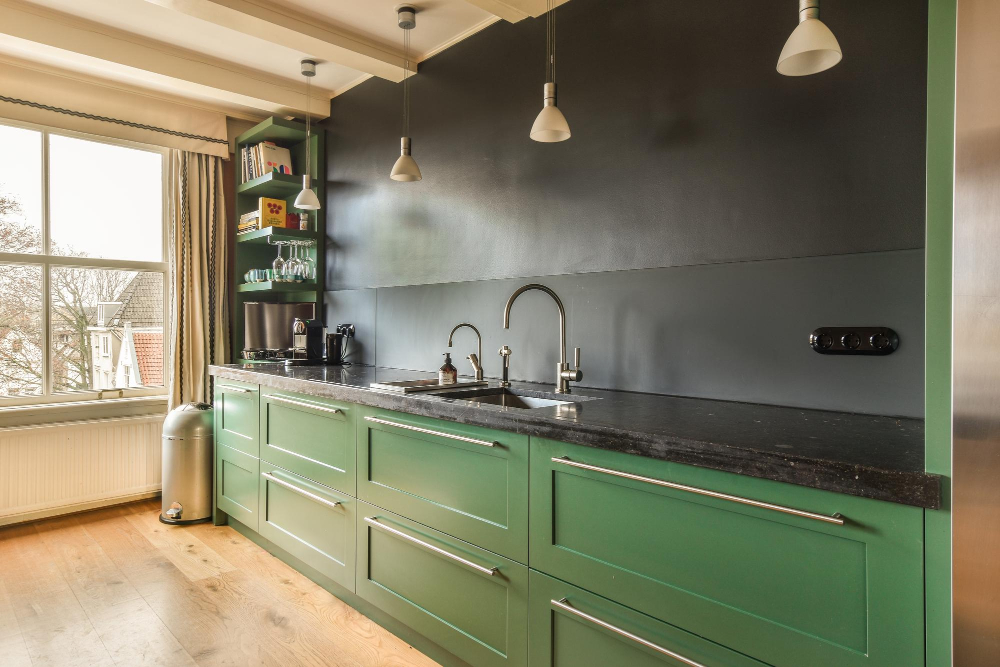
Pendant lights come in various sizes, ranging from small mini pendants to large statement pieces. The first thing you need to determine is the size of your kitchen sink and how many pendants you want above it.
For a single-basin sink, one medium-sized pendant or two smaller ones can work well. If you have a double-basin sink or an extra-wide basin, consider using two larger pendants instead of one.
Another factor that affects pendant size is ceiling height. For standard 8-foot ceilings, aim for a pendant with a diameter between 12-20 inches; anything larger may look overwhelming in the space and obstruct views across the room.
If you have higher ceilings (9 feet or more), opt for bigger fixtures with diameters ranging from 22-30 inches as they will fill out space better without looking too small on their own.
Pendant Size: Determining the Right Dimensions
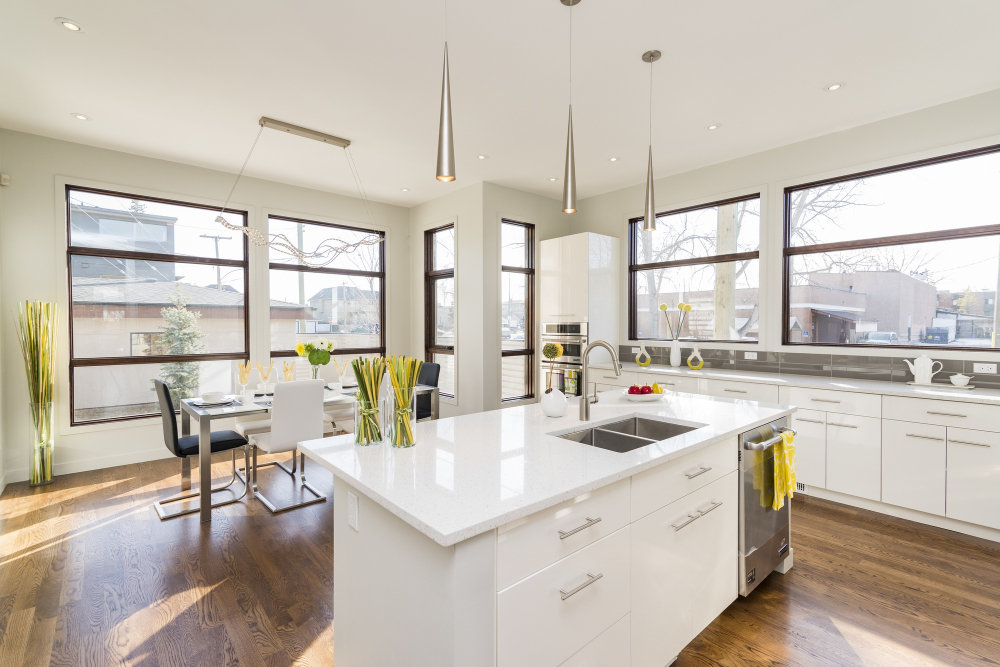
First and foremost, you’ll want to ensure that the pendant is proportionate in size with your sink and surrounding space. A general rule of thumb is that the diameter of your pendant should be approximately one-third the width of your sink or smaller.
Another important consideration when determining pendant size is ceiling height. If you have high ceilings, larger pendants can make a bold statement without overwhelming the space.
However, if you have lower ceilings or limited overhead clearance above your sink area, smaller pendants may be more appropriate.
It’s also essential to think about how many pendants will be installed over your kitchen sink area. If using multiple fixtures in this location (such as two or three), each individual fixture should generally not exceed 12 inches in diameter.
Selecting the Perfect Pendant Shape
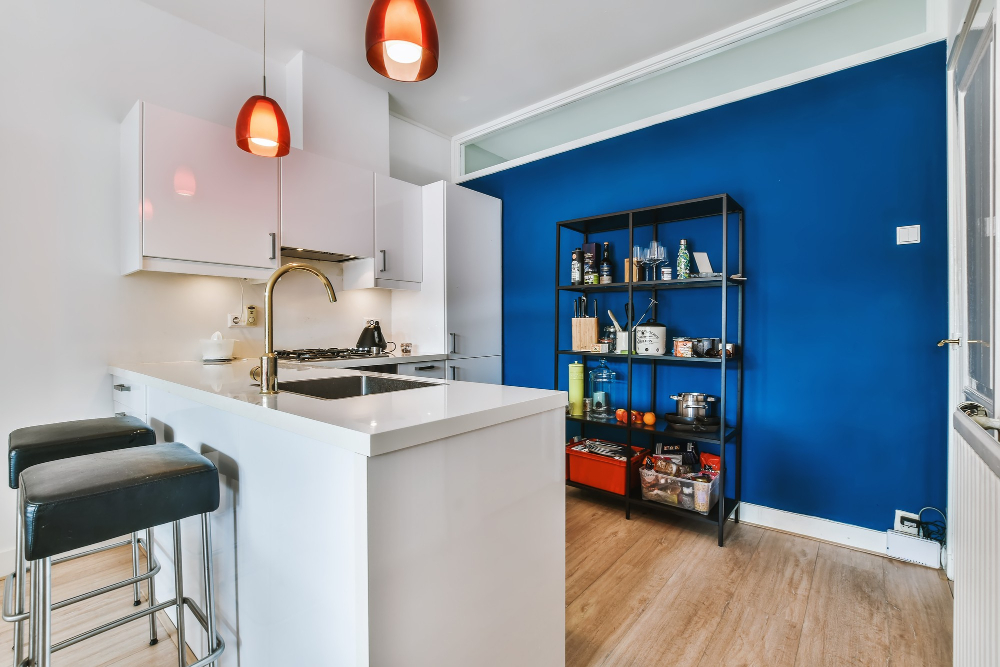
First and foremost, you want to choose a shape that complements the overall style of your kitchen. If you have a modern or contemporary space, geometric shapes like cylinders or spheres may be more appropriate.
On the other hand, if you have a traditional or farmhouse-style kitchen, bell-shaped pendants with rustic finishes can add charm and character.
Another factor to consider is how much light output you need from your pendant. If task lighting is important for washing dishes and preparing food at the sink area then opt for pendants with an open bottom that will provide direct downlighting.
Lastly but not leastly think about how many lights do I need? A single large pendant over small sinks might look disproportionate while multiple smaller ones could work better in this case.
Design Considerations
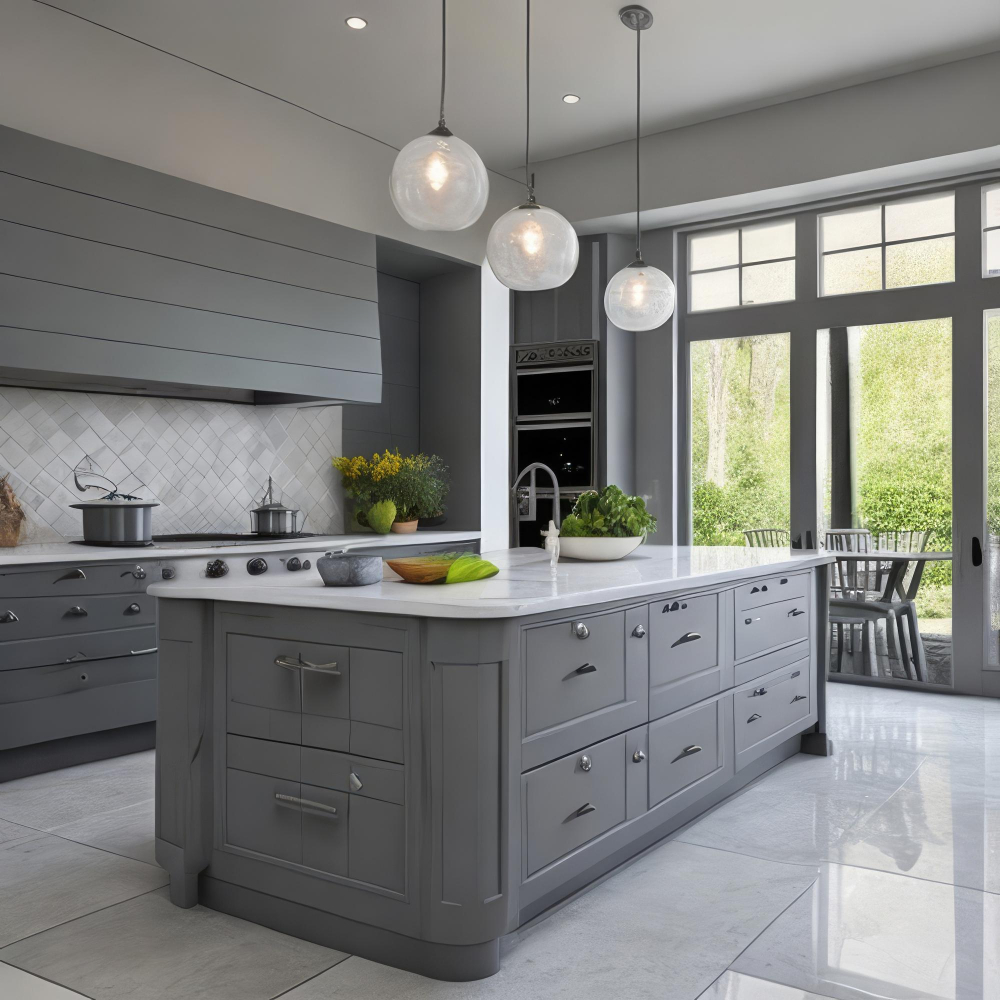
First and foremost, consider the overall style of your kitchen. Do you have a modern or traditional aesthetic? This will help guide you towards choosing a pendant with clean lines or more ornate details.
Another important factor is color coordination. You want to choose a pendant that complements the existing colors in your space rather than clashes with them.
If you have stainless steel appliances and fixtures, for example, consider pendants with metallic finishes like brushed nickel or chrome.
Think about how much light output is needed over your sink area based on its location within the room and time of day when it’s most frequently used (e.g., morning coffee prep vs evening dinner cleanup). A dimmer switch can also be helpful if you want to adjust lighting levels depending on different tasks throughout the day.
Types of Pendant Lights

Each type has its unique features and benefits that can enhance your kitchen sink’s overall look and feel. Some popular types of pendant lights include mini pendants, multi-light pendants, drum pendants, globe pendants, lanterns or cage-style fixtures.
Mini-pendant lights are perfect for small spaces or when you want to create a layered lighting effect over your kitchen sink area. Multi-light pendant fixtures feature multiple bulbs suspended from a single canopy that adds drama and visual interest to any space.
Drum-shaped shades provide soft ambient light while adding an elegant touch to modern kitchens with clean lines. Globe-shaped shades offer diffused light that creates a warm ambiance in the room.
Lanterns or cage-style fixtures add rustic charm while providing ample task lighting for cooking and cleaning tasks at the kitchen sink area.
Measuring for Size
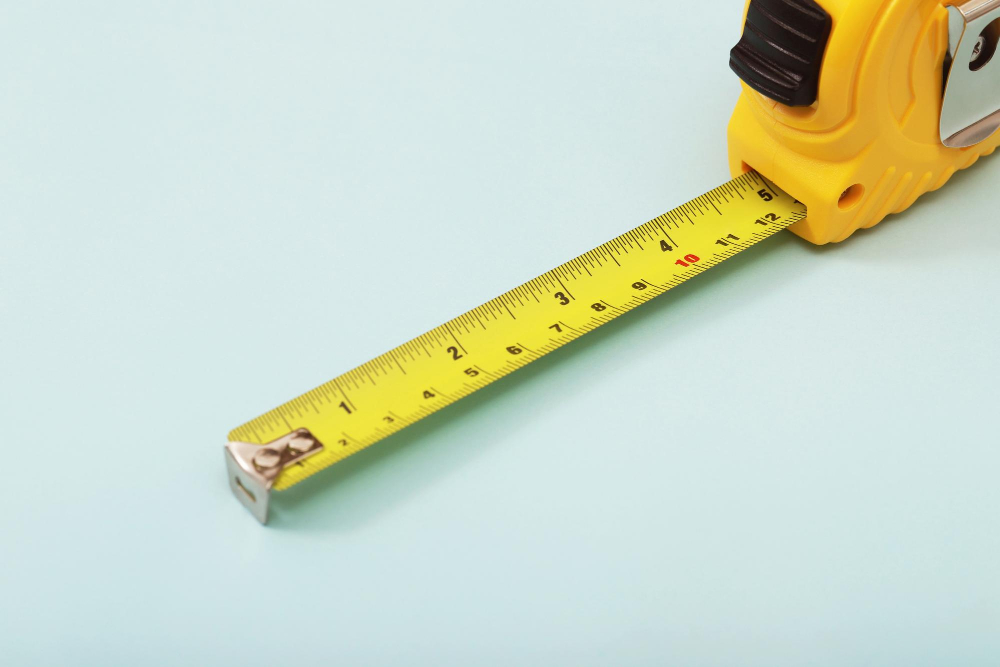
Start by measuring the width of your sink and then subtracting a few inches from each side. This will give you an idea of how wide your pendant should be without overpowering the space.
Next, consider height. The bottom of your pendant light should hang approximately 30-36 inches above the surface of your countertop or sink basin.
If there is a window above or near where you plan to install it, make sure that there is enough clearance between them so that they don’t interfere with each other.
When selecting a fixture for over-the-sink lighting, keep in mind that larger pendants can create more visual interest while smaller ones are less obtrusive and blend into their surroundings better.
Position and Height

The height of the pendant light should be such that it provides adequate lighting for the task at hand, without obstructing your view or causing glare. A general rule of thumb is to hang the pendant light 30-36 inches above the countertop or sink.
However, this measurement can vary depending on various factors like ceiling height, size of pendants and personal preference. If you have a high ceiling in your kitchen, you may want to hang larger pendants lower than usual so they don’t get lost in space.
On the other hand, if you have a low ceiling or limited headroom above your sink area then smaller pendants would work better as they won’t take up too much visual space while still providing ample illumination.
It’s also important to consider how many lights will be installed over one area – multiple small fixtures can create an interesting design element but may not provide enough brightness for tasks like washing dishes or preparing food whereas one large fixture could overpower a small room with its brightness.
Proper Pendant Height and Spacing
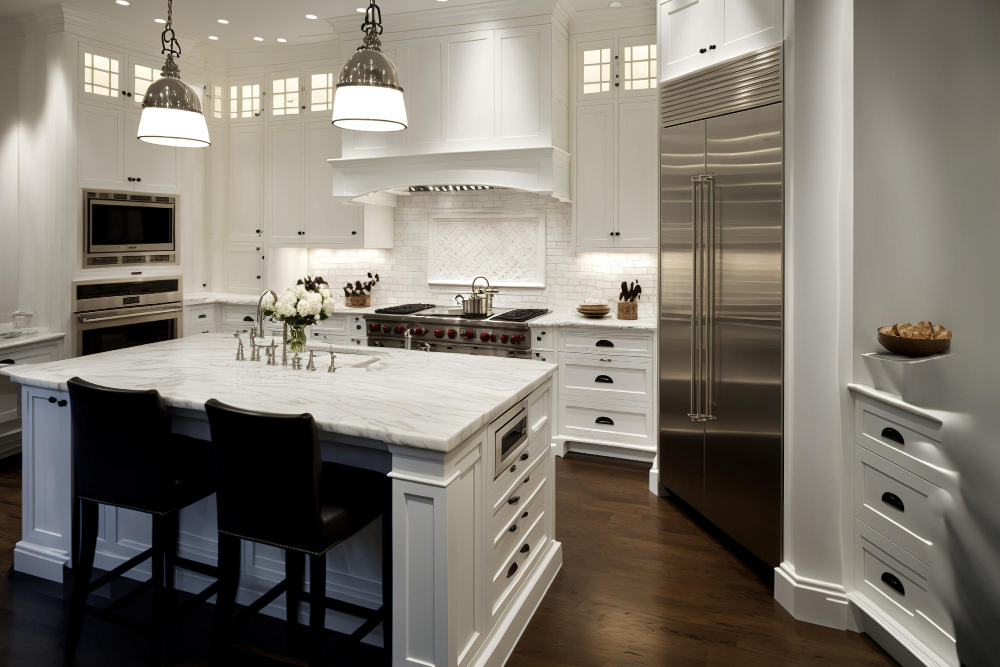
Pendant lights that are too high or too low can be both visually unappealing and impractical. The ideal height for a pendant light above a kitchen sink is typically between 30-40 inches from the countertop surface to the bottom of the fixture.
Spacing is also an essential factor in achieving balance and harmony in your kitchen design. If you have multiple pendants over your sink, make sure they’re spaced evenly apart from each other – usually around 24-30 inches apart.
It’s worth noting that these measurements may vary depending on personal preference, ceiling height, and overall design aesthetic. However, following these general guidelines will help ensure that your pendant lighting not only looks great but functions optimally as well.
Pendant Light Placement for Kitchen Sink With No Window
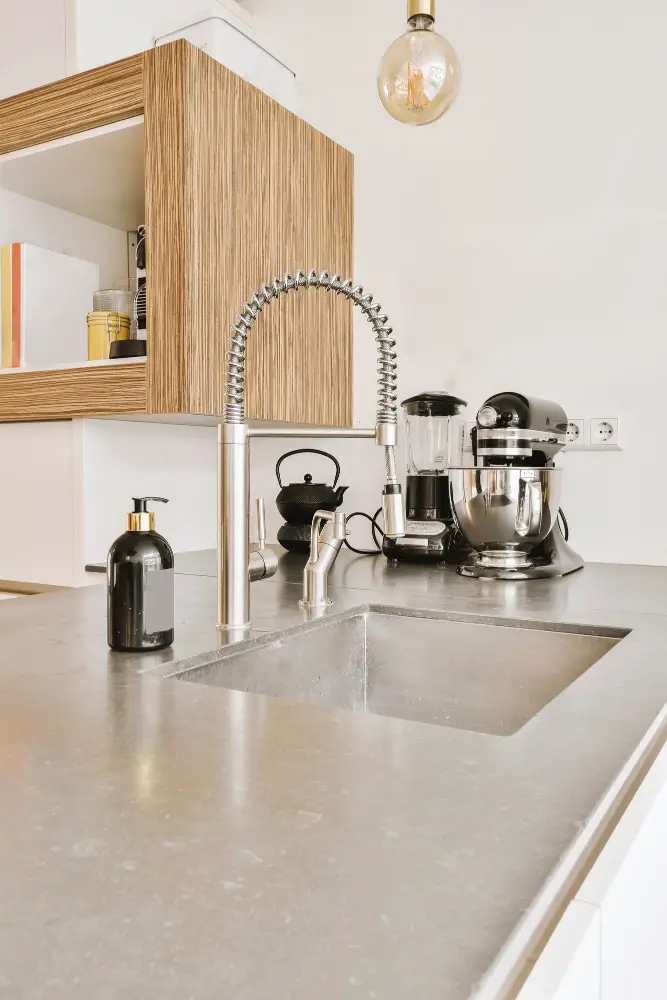
When placing pendant lights over a kitchen sink with no window, it’s important to consider both functionality and aesthetics.
Firstly, you’ll want to ensure that the pendants are positioned directly above the center of your sink. This will provide optimal task lighting for washing dishes or preparing food.
Make sure that there is enough clearance between the bottom of each pendant and any obstructions such as cabinets or countertops.
In terms of aesthetics, consider choosing pendants that complement other elements in your kitchen such as cabinet hardware or faucet finishes. You may also want to choose a style that adds visual interest without overwhelming other design features in your space.
When selecting pendant lights for this type of installation, keep in mind their size and shape relative to both your sink basin and overall countertop area. A good rule-of-thumb is choosing fixtures with diameters ranging from 6-12 inches depending on how many you plan on installing above one another.
Pendant Light Placement for Kitchen Sink With Window
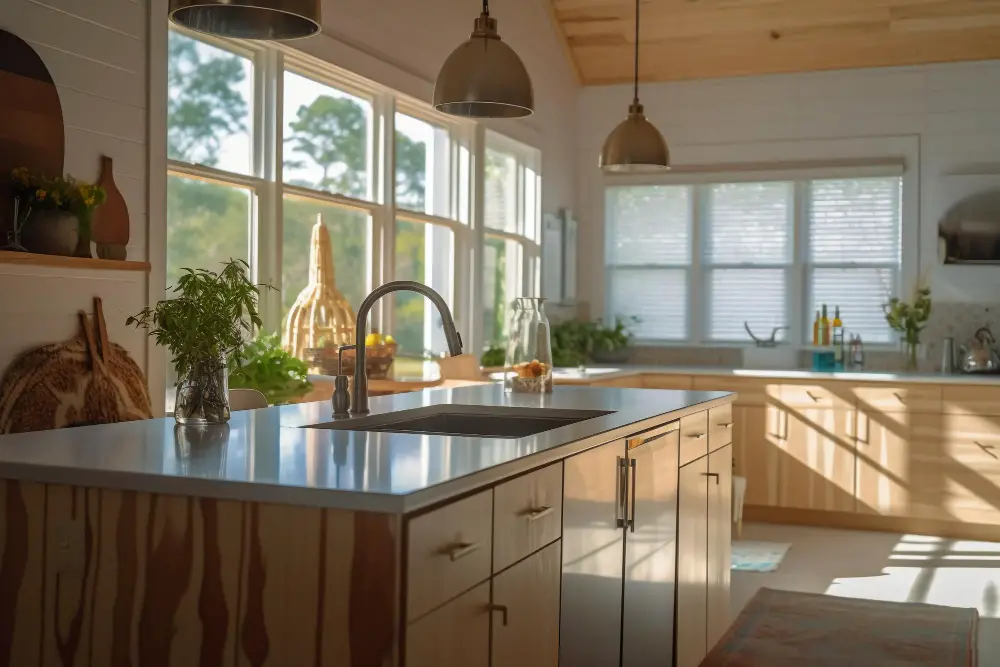
The last thing you want is for the light to obstruct your view or cast shadows on the workspace. One option is to install a pendant that hangs from an adjustable cord or chain so that it can be raised and lowered as needed.
Another approach would be to mount the fixture directly onto the ceiling above and slightly behind where you stand at the sink. This will provide ample lighting without getting in your way while washing dishes or preparing food.
It’s also important not to forget about natural lighting when placing pendant lights over sinks with windows. You may want to choose a fixture with dimming capabilities so that it can adjust accordingly throughout different times of day, depending on how much sunlight comes through.
Layering Kitchen Lighting
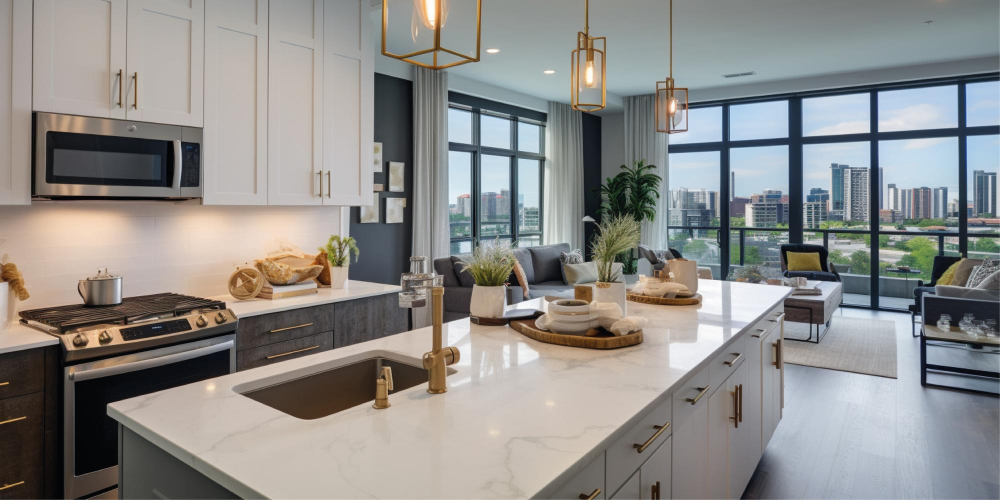
Pendant lights are just one piece of the puzzle when it comes to illuminating your kitchen sink area. To achieve optimal lighting, you’ll want to layer different types of light sources throughout the space.
Consider adding under-cabinet lighting or recessed ceiling lights above the sink for additional task lighting. This will help eliminate shadows and provide ample illumination for washing dishes or preparing food.
Consider incorporating ambient light sources such as chandeliers or wall sconces to create a cozy ambiance in your kitchen. These fixtures can be used to highlight specific areas within the room while also providing general illumination.
By layering different types of light sources, you can create a well-lit and functional space that’s also visually appealing.
Coordinating With Other Lights
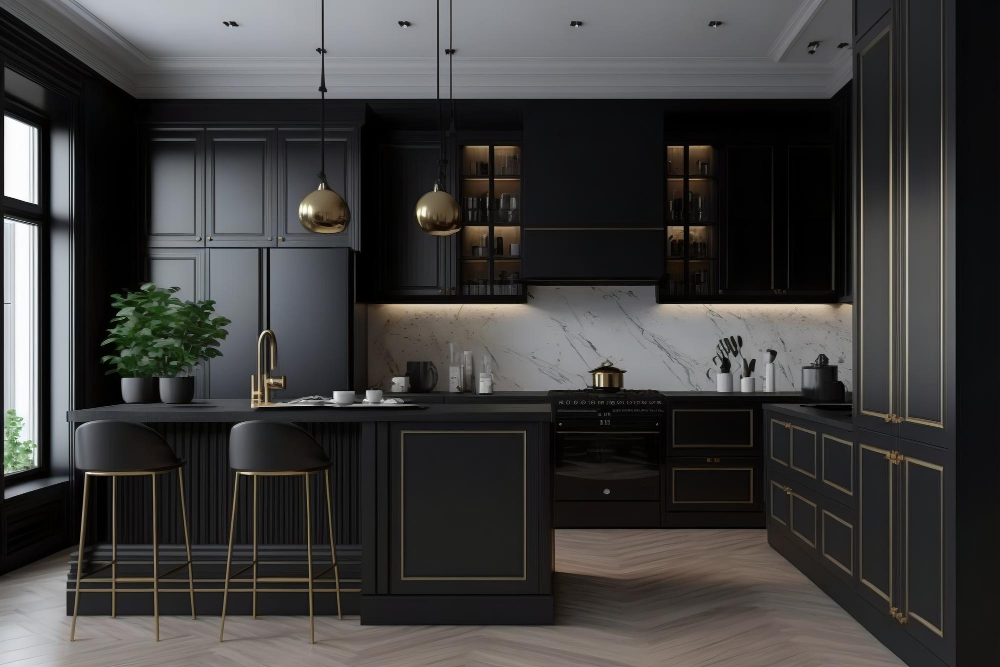
Pendant lights can be used as standalone fixtures or as part of a larger lighting scheme. If you have recessed or track lighting in your kitchen, you’ll want to choose a pendant that complements those fixtures and doesn’t clash with them.
For example, if you have recessed lights above your countertops and under-cabinet task lighting, consider choosing pendants that provide ambient light rather than task-oriented illumination. This will create an overall balanced look throughout the space.
On the other hand, if you’re using pendants as primary sources of light over your kitchen island or dining table area while also having under-cabinet task lights installed on either side of the sink area then make sure they are all coordinated well together so there is no visual conflict between them.
Material and Finish Options
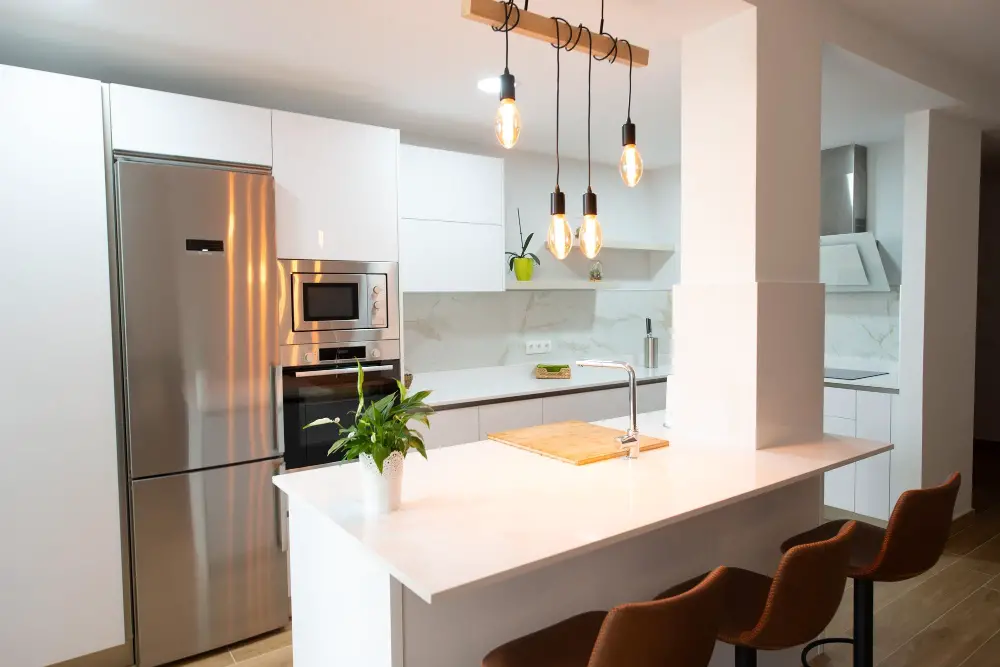
The right choice can make all the difference in creating a cohesive look for your kitchen. Consider materials such as glass, metal, wood or even fabric shades to add texture and interest to your space.
Metal finishes like brushed nickel or oil-rubbed bronze offer a sleek modern look while brass or copper adds warmth and character. Glass pendants come in various shapes, sizes and colors that can complement any decor style from traditional to contemporary.
If you’re looking for something unique consider natural materials like rattan or woven bamboo which provide an organic feel that’s perfect for coastal-inspired kitchens.
Whatever material you choose be sure it complements other fixtures in your kitchen such as cabinet hardware, faucets and appliances so everything works together seamlessly.
Single Vs. Multiple Pendant Lights
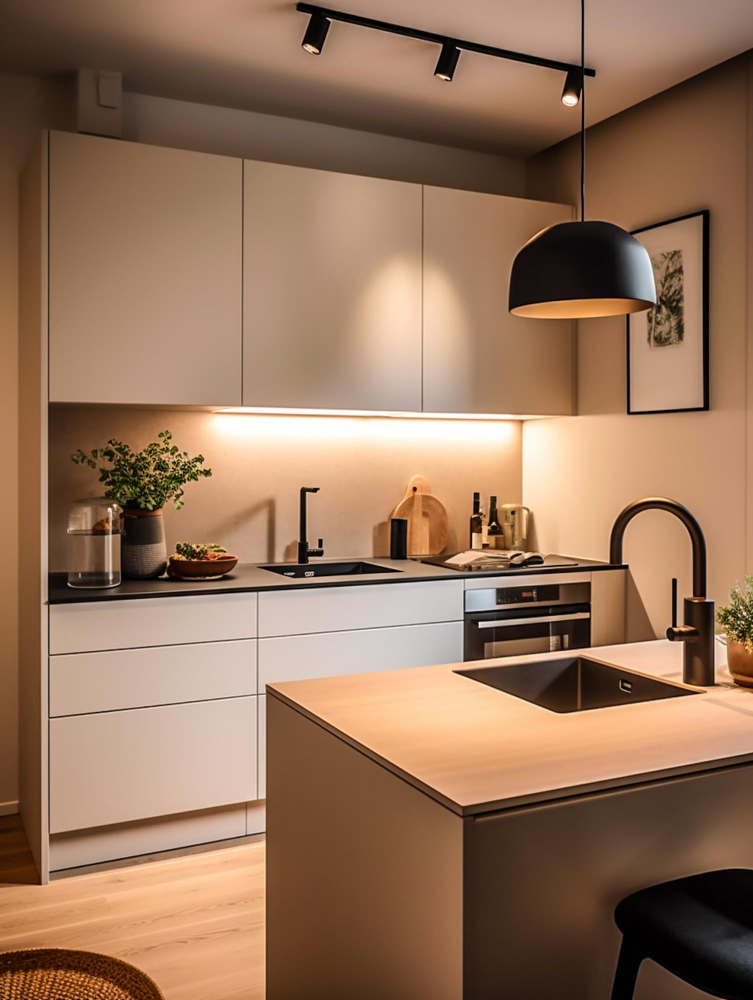
A single pendant light can create a simple and elegant look above your kitchen sink. It’s perfect for those who prefer minimalistic designs or have limited space in their kitchen.
On the other hand, multiple pendants can add more visual interest and provide better illumination over larger sinks or islands. They also allow you to play with different shapes, sizes, and colors to create a unique focal point in your kitchen.
When deciding between single vs. Multiple pendant lights for your kitchen sink area, consider factors such as the size of your sink/counter space and overall design aesthetic of your home.
Color Temperature and Pendant Lights
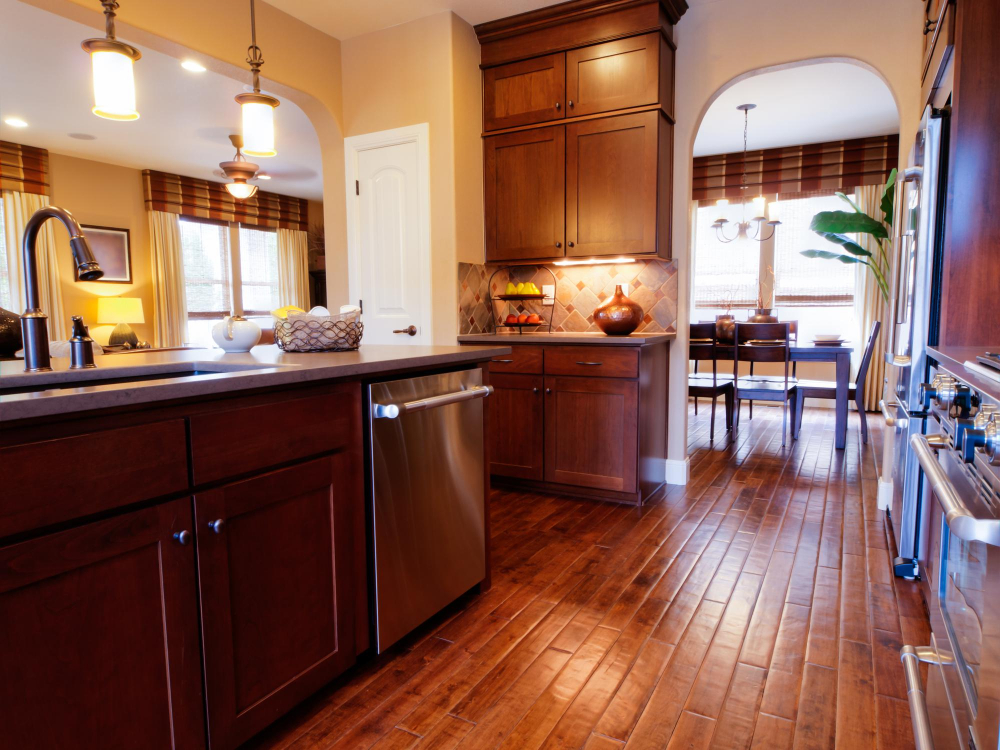
It refers to the warmth or coolness of light, measured in Kelvin (K). Pendant lights with a color temperature between 2700K and 3000K are ideal for creating a warm and cozy ambiance in your kitchen.
On the other hand, pendant lights with a color temperature above 3500K produce cooler light that’s perfect for task lighting.
When choosing pendant lighting, it’s important to keep in mind that different materials can affect how colors appear under certain types of light. For example, if you have white cabinets or countertops, warmer-toned pendants may make them look yellowish instead of bright white.
Consider experimenting with different bulb temperatures before making your final decision on which type of bulb will work best over your kitchen sink area. You might find that one option works better than another depending on the time of day or season.
Glare Reduction Tips for Pendant Lighting
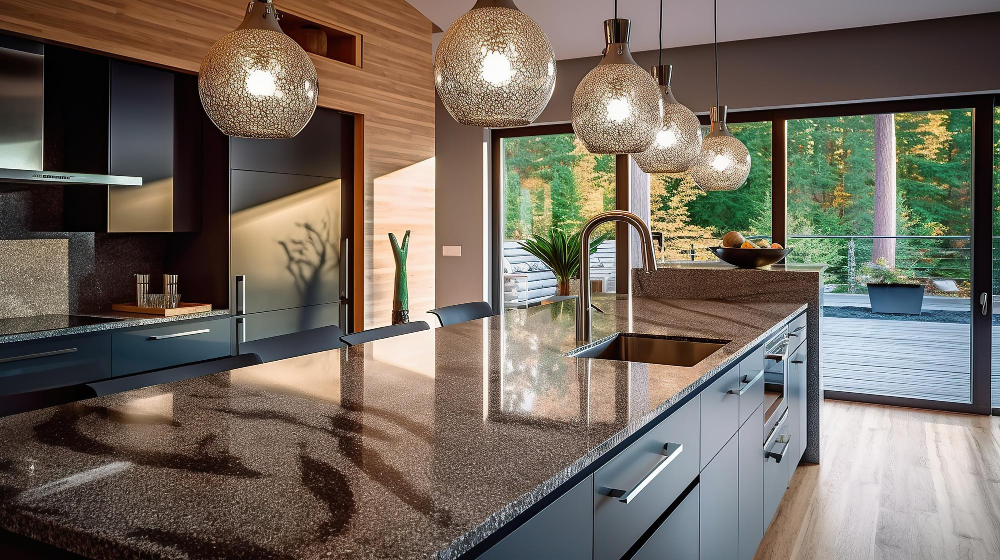
The last thing you want is to have your eyes constantly adjusting or feeling uncomfortable while working in the kitchen. Fortunately, there are several ways to reduce glare and make sure your pendant lights provide optimal functionality.
One of the most effective ways to reduce glare is by choosing a pendant light with a diffuser or frosted glass shade. This will help soften the light and prevent harsh shadows from forming on surfaces below.
Another tip for reducing glare is by positioning your pendants at an angle that directs the light downward onto your work surface rather than directly into your eyes. You can also consider installing dimmer switches so that you can adjust the brightness of each fixture as needed.
Lastly, keep in mind that proper cleaning and maintenance of both bulbs and shades will ensure maximum efficiency when it comes to reducing unwanted glares from overhead lighting fixtures like pendants.
Installing a Pendant Light
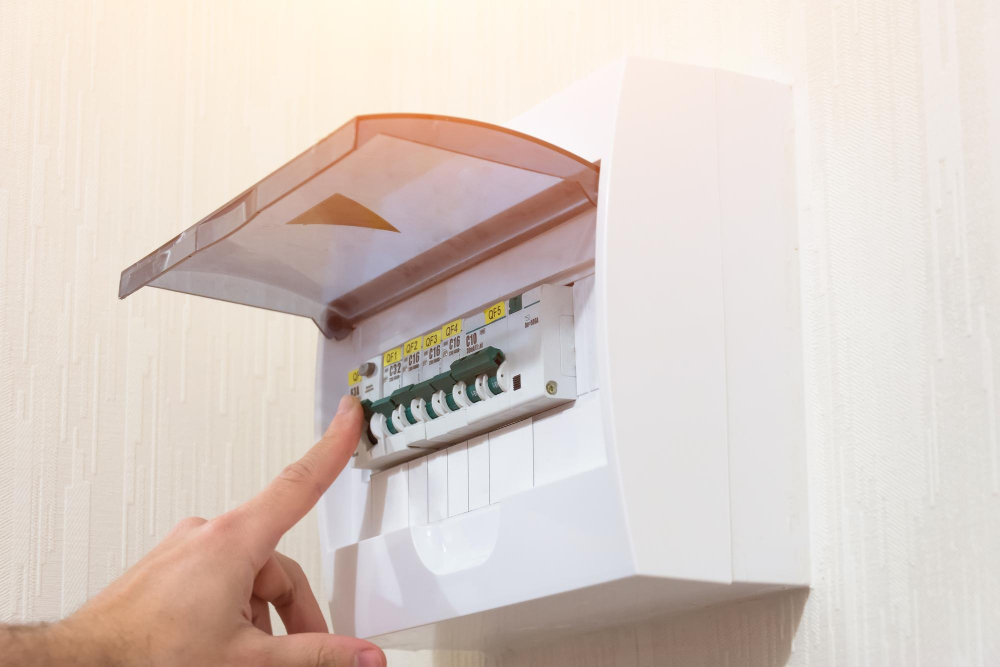
If you’re not comfortable working with electrical wiring, we recommend hiring a licensed electrician to do the job. However, if you feel confident in your abilities and want to tackle this project yourself, here are some general steps to follow:
1. Turn off power: Before beginning any electrical work, turn off power at the circuit breaker.
2. Remove old fixture: If there is an existing light fixture above your sink that needs replacing or removing before installing a new pendant light.
3. Install mounting bracket: Follow manufacturer instructions on how to attach the mounting bracket securely onto ceiling junction box.
4.Wire connections : Connect wires from ceiling junction box with those of pendant lamp using wire nuts (usually color-coded).
5.Attach shade and bulb : Attach shade according manufacturer’s instruction then screw in bulb.
6.Turn on Power : Once everything is installed correctly ,turn back on power at circuit breaker.
Cleaning and Maintenance
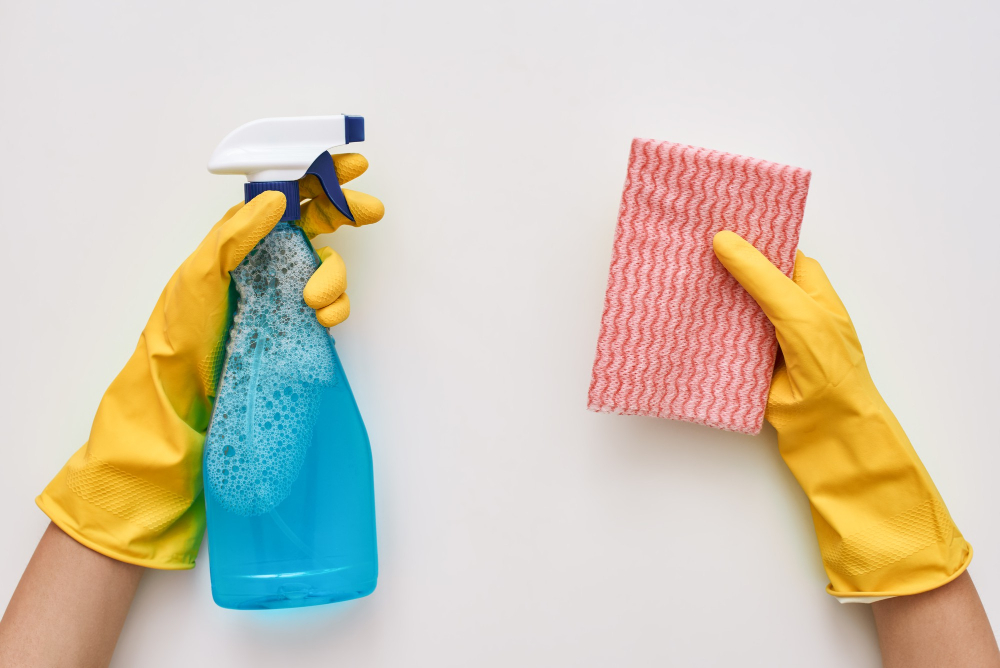
Regular cleaning will not only ensure that your pendant light looks its best but also prolongs its lifespan.
To clean a pendant light, first turn off the power supply and let the bulb cool down if necessary. Then remove any dust or debris with a soft cloth or duster.
For more stubborn dirt or grime, use a damp cloth with mild soap solution to gently wipe away any stains.
It’s essential to avoid using abrasive cleaners as they can scratch delicate finishes on some materials like glass shades. Also, never spray water directly onto electrical components of the fixture as this could cause damage.
In addition to regular cleaning, proper maintenance is crucial for keeping your kitchen sink pendant lights in good working order. Check periodically for loose screws or connections and tighten them if needed; replace bulbs promptly when they burn out; inspect cords regularly for signs of wear such as fraying wires which may indicate an electrical hazard.
FAQ
How big should kitchen pendant lights be?
The diameter of kitchen pendant lights should be approximately half the width of the island, for example, a 3-feet wide island would need a 15″-18″ wide light fixture.
How do I choose the right size pendant?
To choose the right size pendant, multiply the room’s height by 2.5 and 3 to determine the ideal height range for the pendant.
Should you put a pendant light over kitchen sink?
Yes, you should hang a pendant light over your kitchen sink, especially if there is not enough ambient light, ensuring it is covered in glass or acrylic and hangs at a sufficient distance from the sink for adequate working space.
What is the best light for above a kitchen sink?
The best light for above a kitchen sink is a basic recessed lighting fixture, as recommended by the National Kitchen and Bath Association.
What are the key factors to consider when selecting a pendant light for the kitchen sink area?
When selecting a pendant light for the kitchen sink area, consider factors such as size, illumination, material, style, and integration with the overall kitchen design.
How does the style and design of the pendant light influence the overall aesthetic of the kitchen?
The style and design of the pendant light significantly influence the overall aesthetic of the kitchen by enhancing or complementing its visual appeal, layout, and ambiance.
What are some common mistakes to avoid when installing a pendant light above the kitchen sink?
Common mistakes to avoid when installing a pendant light above the kitchen sink include improper height, incorrect positioning, and inadequate illumination.





